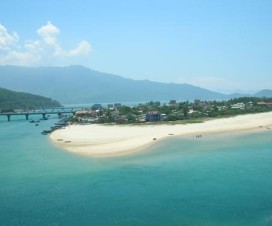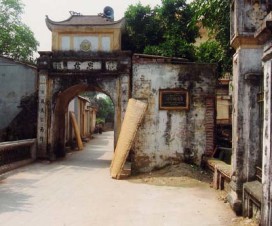Vestiges of prehistoric human settlements and two historic seaports have been discovered by archeologists in Bai Tu Long Bay in the northern province of Quang Ninh.
Traces of prehistoric peoples have been found at Ang Gia Cave in Thang Loi Commune and at Hoi Cave in Ban Sen Commune, including stone tools and fossilized remnants of burned wood, animal bones, and a large number of shells of Melania (a kind of freshwater snail) and of Cyclophorus (mountain snail).
Two stone tools were also recovered from the bottom of a stream, suggesting they were left in the process of tool-making.
Many of the shells of the freshwater snails show evidence of having their ends broken to extract the meat, said Prof Trinh Nang Chung, head of the excavating team.
The two newly discovered caves were used by prehistoric people when the area was not separated from the mainland by the sea, Chung said, suggesting that the people might be from the Soi Nhu Culture, vestiges of which were earlier found in Ha Long and Bai Tu Long bays.
They lived there about 10,000 years ago, Chung said.
Traces of two seaports from the Tran (1225-1400) and Le (1428-1788) dynasties – designated the Map Tai Port and Dau Su Port – were found in Ngoc Vung and Minh Chau communes, respectively, along with a large quantity of ceramic pieces in blue and white glaze, with some thought to have been imported from abroad.
The seaports were believed to belong to the Van Don port system, which was first established in 1149 and in use between the 12th and 18th centuries, at first for trade with ships from other Southeast Asian countries, and later with China, Japan, and the Middle East. The two main ports in the system, the Cai Lang and Cong Cai ports, were located on Van Hai Island.




